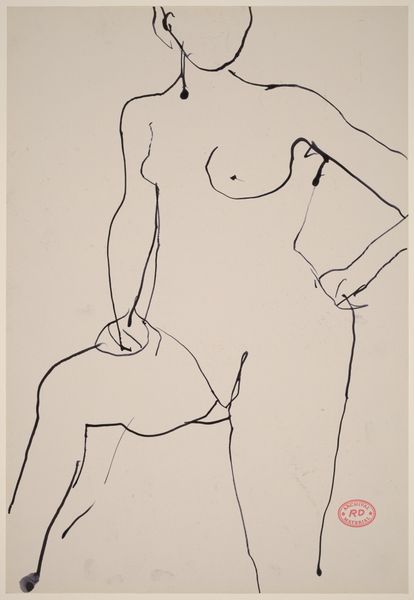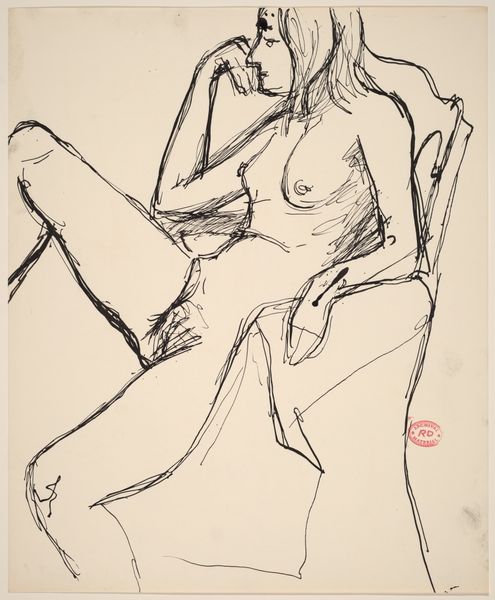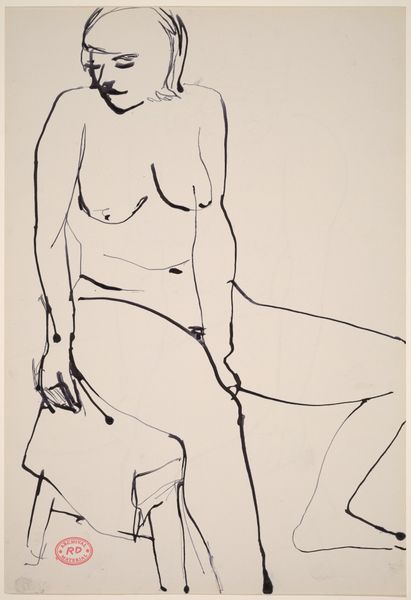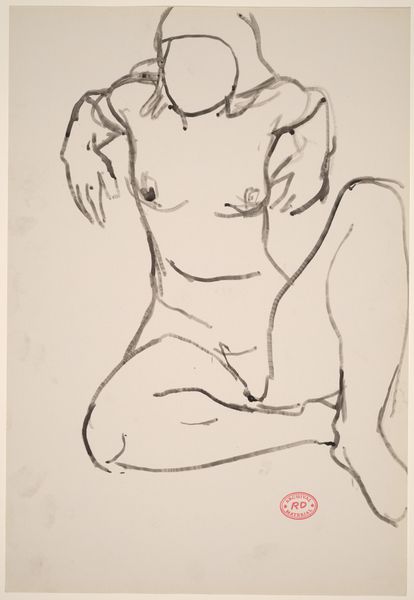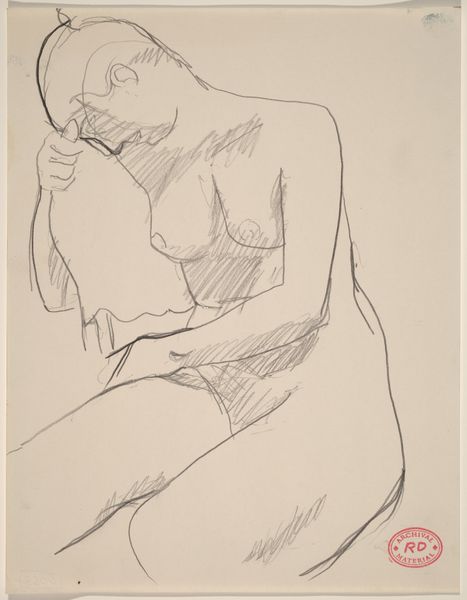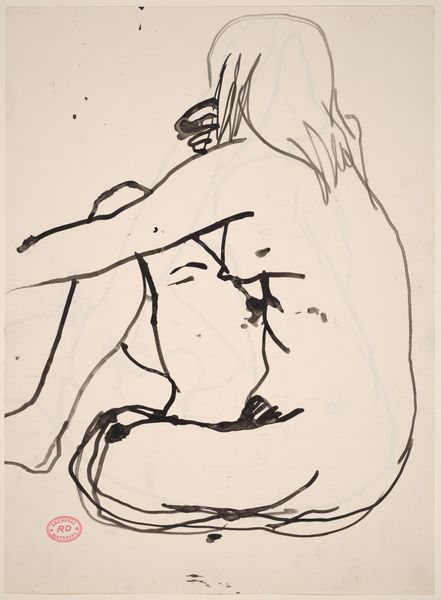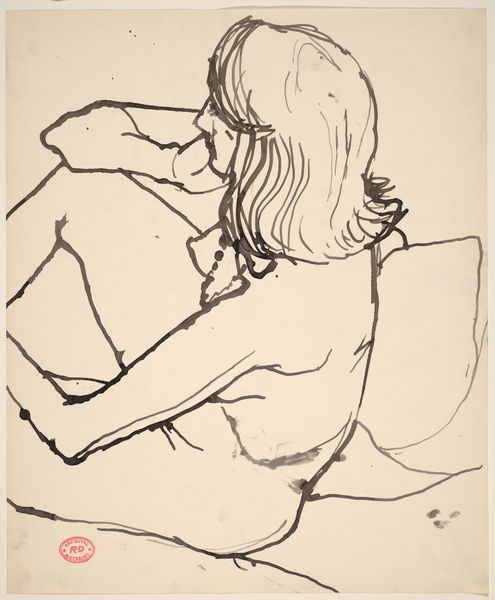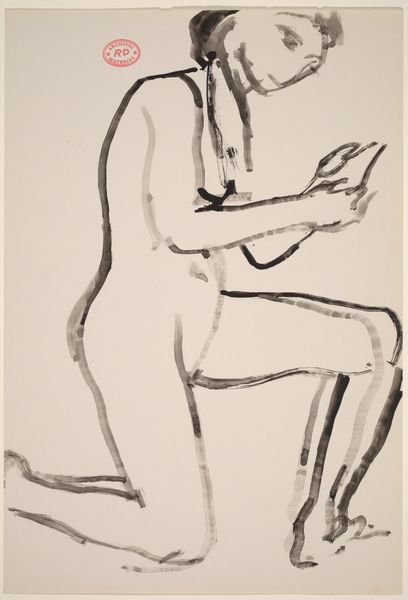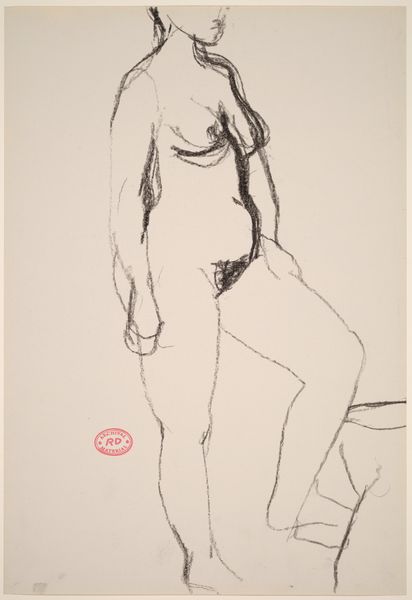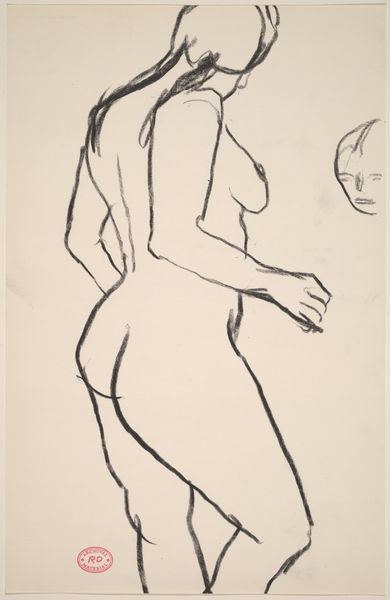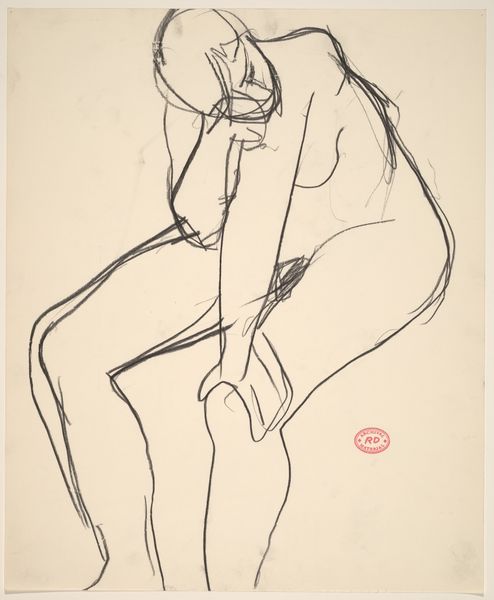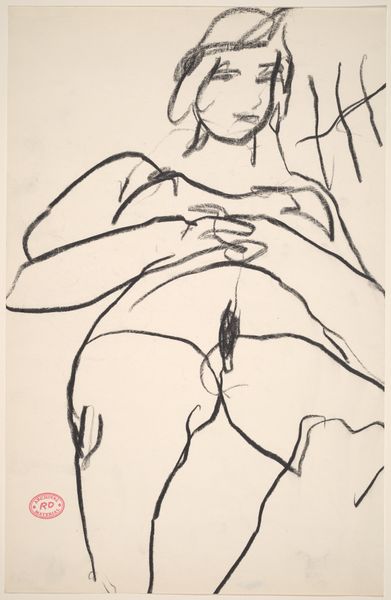![Untitled [female nude seated on striped fabric] by Richard Diebenkorn](/_next/image?url=https%3A%2F%2Fd2w8kbdekdi1gv.cloudfront.net%2FeyJidWNrZXQiOiAiYXJ0ZXJhLWltYWdlcy1idWNrZXQiLCAia2V5IjogImFydHdvcmtzL2IxNTQ5YTFkLTlhYzYtNDg1MC04MjllLWI3YjdiYmYyOTVlMS9iMTU0OWExZC05YWM2LTQ4NTAtODI5ZS1iN2I3YmJmMjk1ZTFfZnVsbC5qcGciLCAiZWRpdHMiOiB7InJlc2l6ZSI6IHsid2lkdGgiOiAxOTIwLCAiaGVpZ2h0IjogMTkyMCwgImZpdCI6ICJpbnNpZGUifX19&w=3840&q=75)
Untitled [female nude seated on striped fabric] 1955 - 1967
0:00
0:00
drawing, ink, pen
#
portrait
#
drawing
#
ink drawing
#
pen sketch
#
figuration
#
bay-area-figurative-movement
#
ink
#
pen
#
nude
Dimensions: overall: 40.6 x 34.9 cm (16 x 13 3/4 in.)
Copyright: National Gallery of Art: CC0 1.0
Curator: Here we have Richard Diebenkorn’s pen and ink drawing, “Untitled [female nude seated on striped fabric],” likely created sometime between 1955 and 1967. Editor: There’s a real immediacy to it, wouldn't you agree? The sparseness almost gives it a melancholic feel. The stark contrast of the black ink against the white paper really emphasizes the texture of the lines. Curator: I find it interesting how Diebenkorn utilizes the simple medium of ink to explore classical themes, such as the nude figure, within a modern, almost abstract, visual language. The subject echoes the reclining Venus, but transformed. Editor: It’s precisely that tension, that dialogue between tradition and the modern aesthetic, which draws me in. Looking closely, you see the economical way he suggests form with just a few confident strokes. And those splatters—controlled accidents, maybe? Curator: Perhaps. They certainly add a sense of dynamism, preventing the work from feeling static. And I think those stripes beneath the figure help anchor her while creating an abstract stage-like space for her to exist within. The stripes repeat patterns already expressed by her body and hair. Editor: Definitely. It brings up a certain formalism, though in this case I wonder how important the commercial production of ink and paper are, especially when the gesture appears so intimate, personal, and maybe a little bit fraught. Was there much demand for affordable art at the time? Curator: Considering the timeframe, this coincides with an increasing accessibility and experimentation of art supplies—more artists were using drawing in ways previously considered unorthodox. As for the artist’s intent, maybe this was a study for a painting. Editor: I suppose we'll never know for certain, but considering it, it encourages me to think of drawing as labor and intimacy as the product of certain artistic conditions and available materials. Curator: I'll consider that going forward—and appreciate the perspective. It enriches the way one perceives art. Editor: Indeed, that close inspection yields unexpected fruit!
Comments
No comments
Be the first to comment and join the conversation on the ultimate creative platform.
